The Evolution of Coca-Cola
In this blog, we will delve into the remarkable journey of Coca-Cola, exploring its humble beginnings, innovative marketing strategies, iconic branding, global expansion, and enduring legacy.
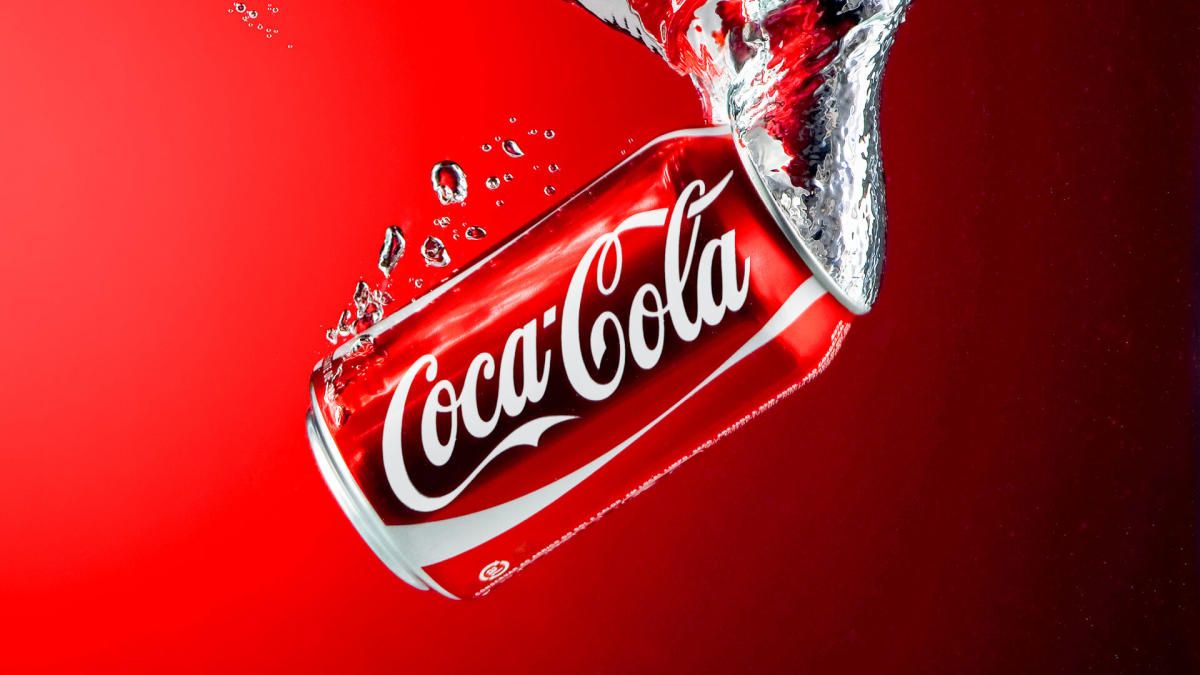
Introduction:
Coca-Cola, the world's most recognizable beverage, has a fascinating and dynamic history that spans over a century. What began as a simple medicinal tonic in the late 19th century has transformed into a global phenomenon, captivating taste buds and shaping popular culture. In this blog, we will delve into the remarkable journey of Coca-Cola, exploring its humble beginnings, innovative marketing strategies, iconic branding, global expansion, and enduring legacy.
The Birth of Coca-Cola
In the late 19th century, pharmacist Dr. John S. Pemberton invented Coca-Cola in Atlanta, Georgia, as a medicinal drink. Pemberton's initial intention was to create a tonic to alleviate various ailments, including headaches and indigestion. The original formula contained extracts of coca leaves and kola nuts, hence the name "Coca-Cola." Its early success was attributed to its perceived therapeutic benefits and refreshing taste.
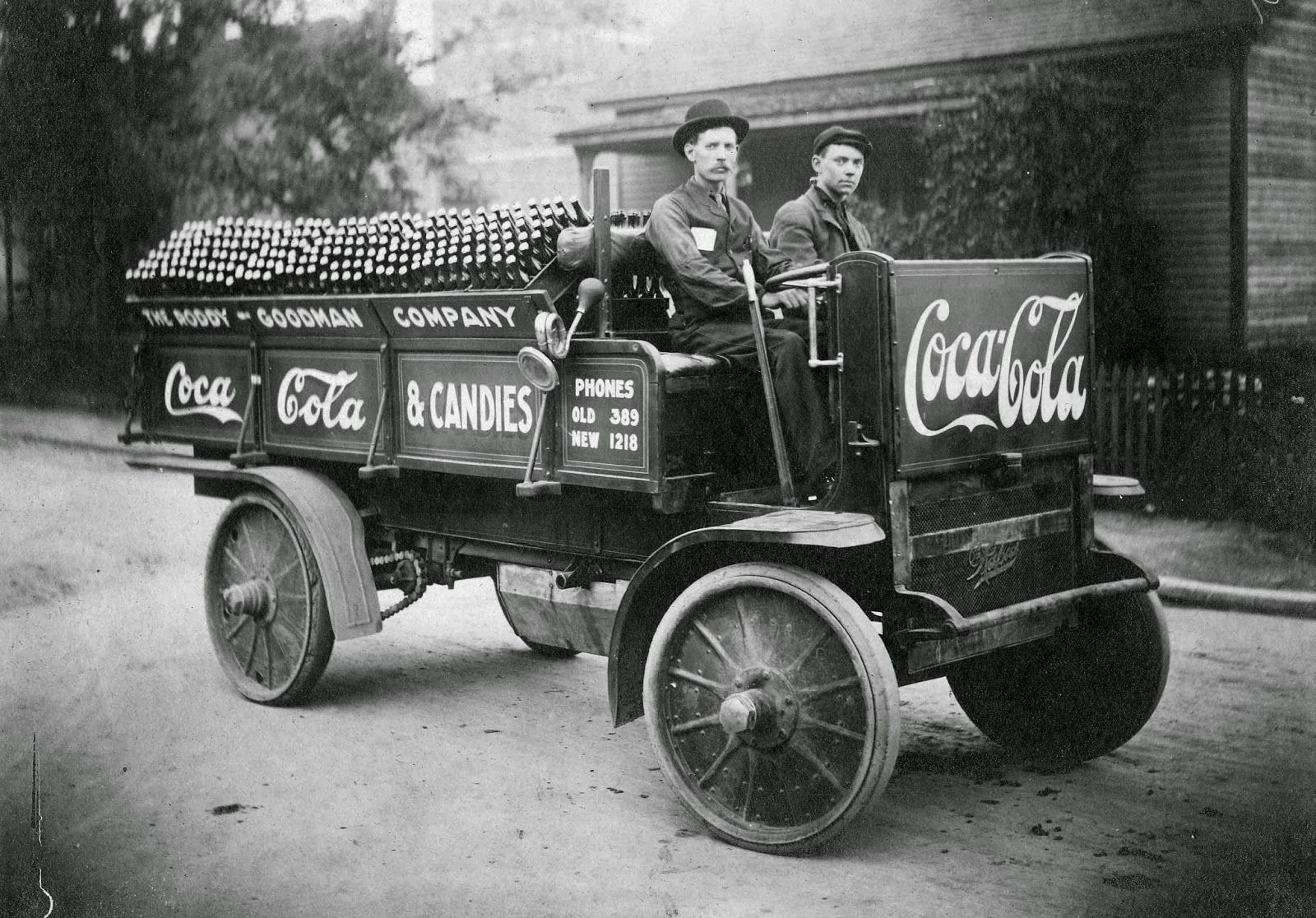
In the early years, Coca-Cola had a lot of competition. In fact, the early 1900s was the most active period in the development of new soft drinks. Some of these companies went out of business or were bought out by other larger companies. However, many of these brands are still in existence today as more novelty brands and hold a very small percentage of the market.
The most prominent competitors to Coca-Cola throughout its history have been Pepsi and Dr. Pepper. They were both created around the same time as Coca-Cola (Pepsi in 1898 and Dr. Pepper in 1885). Over time, these three giants bought up many of the smaller beverage companies.
Coca-Cola going commercial
In 1886, Pemberton's partner, Frank M. Robinson, coined the name "Coca-Cola" and created the famous Spencerian script logo that remains a hallmark of the brand. As demand grew, the company adopted an aggressive marketing strategy, distributing coupons for free samples and promoting the beverage as an invigorating, effervescent drink. The introduction of Coca-Cola in bottles further expanded its accessibility and popularity.
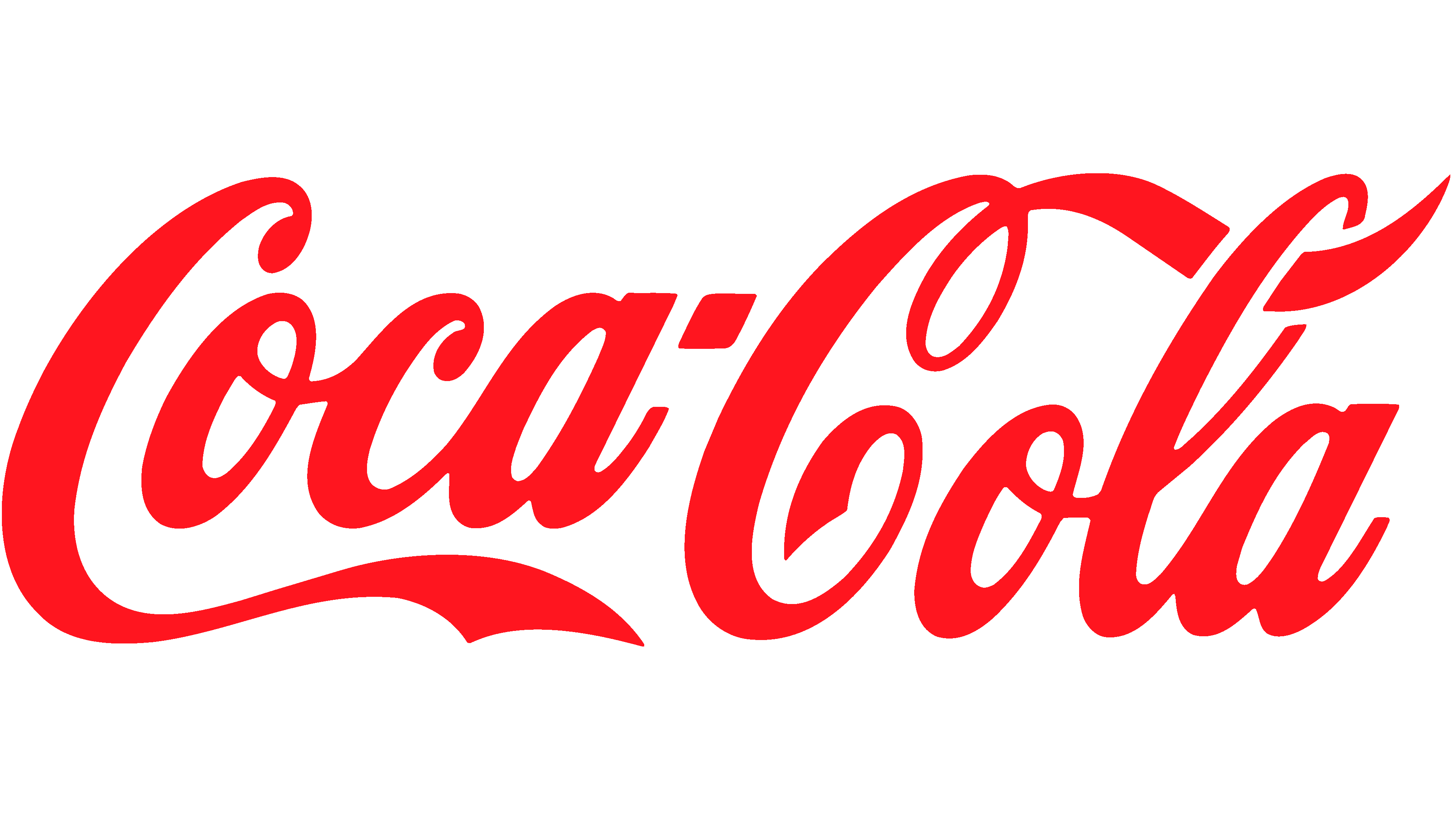
As Coca-Cola gained popularity, the company recognized the importance of establishing a strong and consistent brand identity. In 1894, the first trademark for Coca-Cola was registered with the U.S. Patent Office, solidifying its legal protection and providing a foundation for the brand's future growth.
The Coca-Cola Bottle
In 1915, Coca-Cola faced intense competition in the beverage market, and it became evident that the brand needed a distinctive bottle design to set itself apart. To meet this challenge, Coca-Cola launched a competition to create a unique bottle that would be instantly recognizable even in the dark or if shattered.
The introduction of the Coca-Cola contour bottle marked a significant shift in the brand's packaging strategy. It replaced the previous straight-sided bottles and became the primary packaging for Coca-Cola. This bold move was a testament to Coca-Cola's commitment to innovation and its understanding of the importance of visual branding.
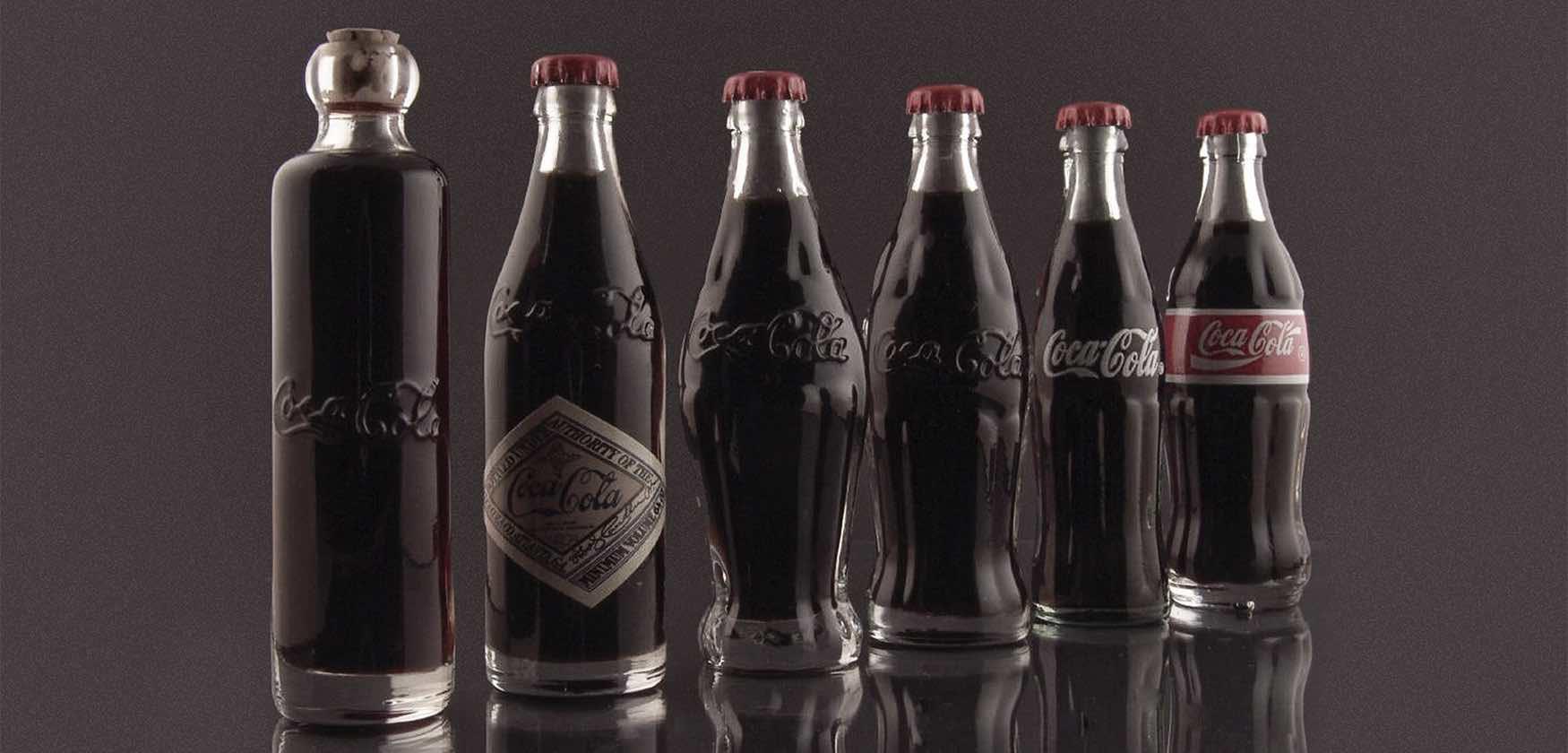
The contour bottle played a crucial role in establishing Coca-Cola's identity and differentiating it from other carbonated beverages. Its unique shape made it instantly recognizable, even without the Coca-Cola logo. Consumers could identify Coca-Cola simply by the contour bottle's silhouette, which became an iconic symbol of the brand.
Coca-Cola's Global Franchise Distribution Network
The Coca-Cola Company’s rapid expansion around the world can be attributed to its unique franchise distribution system that they have operated since 1889. Coca-Cola produces syrup concentrate which is then sold to various bottlers around the world. This helps the company maintain control over its top-secret recipe without the burden of having to run many of the independent bottling facilities.
The Coca-Cola System is a network of over 900 bottling plants that produce 2 billion servings of Coca-Cola every day. The bottlers each hold contracts that allow them to exclusively operate in a predetermined territory. This reduces the need for the competition from multiple companies that sell the same product.
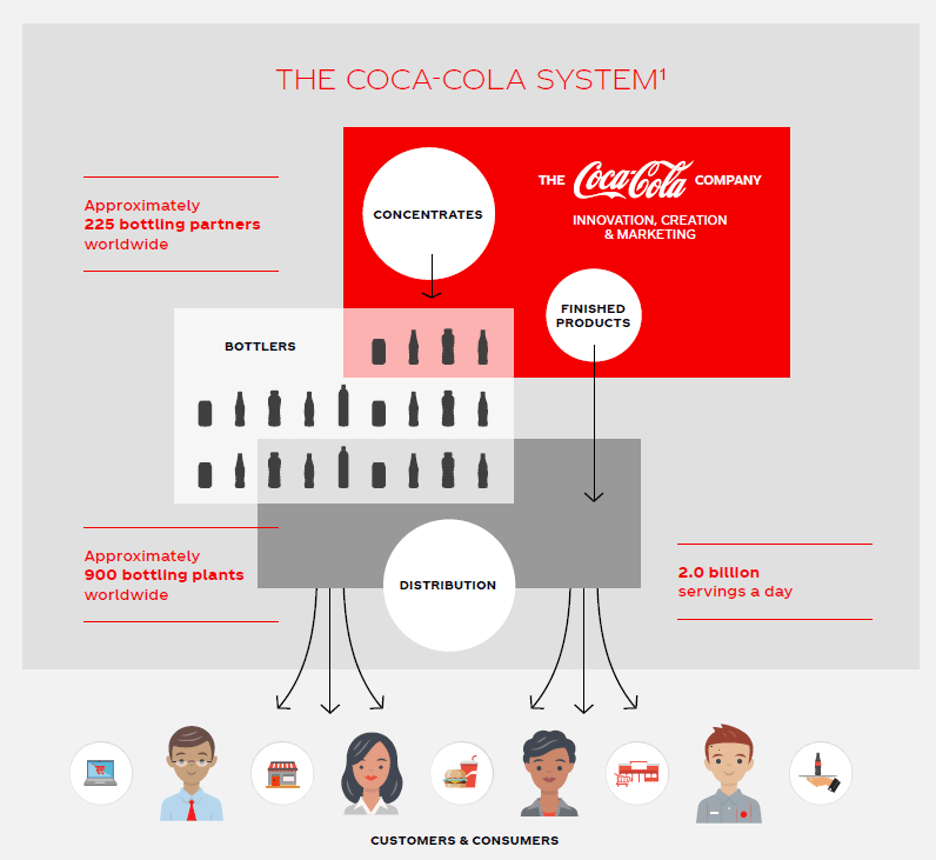
These distributors handle all aspects of the production and distribution process including mixing the syrup with carbonated water and sweeteners, placing the finished product in cans or bottles, and distributing Coca-Cola to supermarkets, vending machines, restaurants, and movie theaters. Although Coca-Cola produces the main syrup, the franchise companies also control the soda fountain business in their territory.
The exception to this model is the North American market where The Coca-Cola Company directly owns most of the bottling and distribution. Outside of the United States, Coca-Cola has continued to encourage the consolidation of its various bottling companies.
Growth Strategy of Coca-Cola
With the aim of driving further growth, the company has established a set of core objectives to be implemented in the upcoming years. This strategic plan serves as a roadmap, enabling the company to realign its efforts and take deliberate actions towards achieving its goals.
Focus on developing markets
Coca-Cola acknowledges the growth potential in the developing world, where commercialized beverage consumption is lower compared to the developed world. With 80 percent of the global population residing in these markets, significant growth opportunities exist.
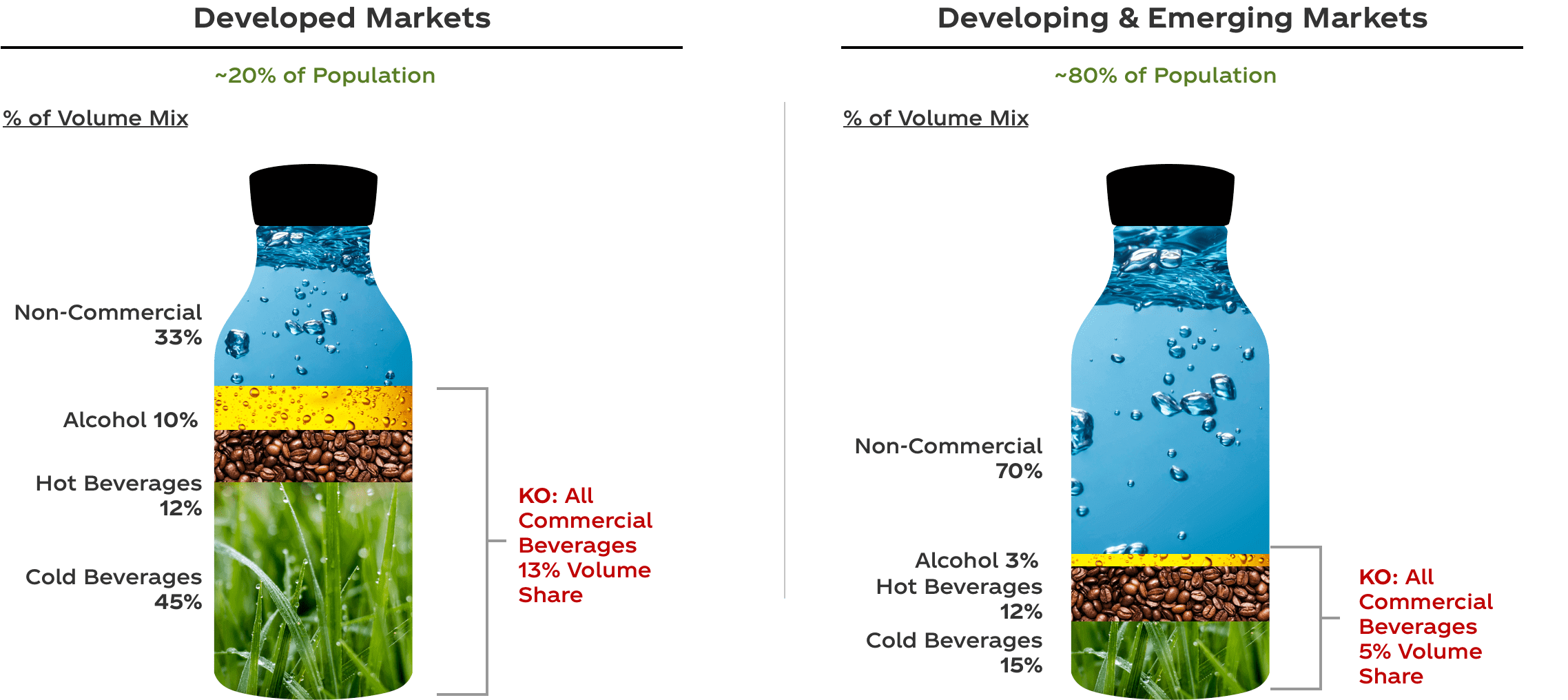
To capitalize on this, Coca-Cola aims to diversify its brand and expand beyond its stronghold in major markets. By experimenting with new products and focusing on other beverage categories, the company aims to gain momentum and increase its market share.
Brand portfolio optimization
Bigger isn’t always better. The Coca-Cola Company is realizing that its efforts may be spread across too many individual brands. Their goal is to rebalance their portfolio and consolidate products into fewer master brands. They have already reduced this number from approximately 400 to 200. By having fewer master brands, they can better focus their efforts.
Networked organization
Operating a large corporation comes with challenges. In many cases, there can be inefficiencies and duplicated efforts. Coca-Cola plans to address this by reorganizing its support and operational teams to provide better support and work more effectively.
Brand building
The company plans to deliver world-class marketing through targeted resource allocation. The goal is to be more intentional with the way advertising and marketing investments are made.
Innovation
Coca-Cola has a goal to increase the frequency that new or existing consumers drink their products. To do this, the company has set targets to significantly increase innovation by bringing more trial products and projects into the pipeline. The goal is to increase this by 40 percent.
Digital transformation
Coca-Cola understands that data is a powerful tool. They are in the process of undergoing a digital transformation to help the company operate more effectively and leverage data to drive decision-making.
Revenue growth management
With this new data and digital tools available, the company can place a renewed focus on which areas have the most potential for growth. They will focus on understanding which markets, consumers, product lines, and competitors should be addressed.
Hence, The Coca-Cola Company is dedicated to growing the business through a skillfully designed and executed strategic plan. Their long-term goals are to focus on expanding the commercial beverage industry in developing countries. They also plan to optimize their product line by reducing the number of master brands, creating new innovative products, changing their internal operations teams to streamline processes, and better leverage data.
The Rise of Coca-Cola Through Advertisement
Coca-Cola's advertising has been instrumental in the brand's ascent to global prominence. By consistently emphasizing happiness, togetherness, and creating memorable experiences, Coca-Cola's campaigns have struck a chord with consumers worldwide. Through iconic collaborations with Santa Claus, captivating TV commercials, and innovative digital marketing strategies, the brand has successfully captured and retained consumer attention.

Moreover, Coca-Cola's strategic sponsorships and impactful cause-related initiatives have not only solidified its position as a cultural icon but also showcased its dedication to making a positive difference in society. Ultimately, Coca-Cola's advertising legacy is one of creativity, emotional connection, and a commitment to leaving a lasting impact on the world.
Key statistics and facts about The Coca-Cola Company:
- Owns 43.7% of the US carbonated soft drinks market.
- Net operating revenue of $38.7B.
- Present in more than 200 countries and territories.
- Employs over 700,000 along with its bottling partners.
- Ranked #93 in the Fortune 500.
- Μarket value of $259.77 billion as of February 2023.
Conclusion:
The evolution of Coca-Cola is a testament to the power of innovation, marketing, and adaptability. From its humble origins as a medicinal tonic to its current status as a global icon of refreshment, Coca-Cola has transcended boundaries and shaped the way we perceive and enjoy soft drinks. Through memorable branding, pioneering advertising, global expansion, a commitment to social responsibility, and a focus on innovation, Coca-Cola continues to capture the hearts and taste buds of millions, proving that its evolution is far from complete. Cheers to the enduring legacy of Coca-Cola!





